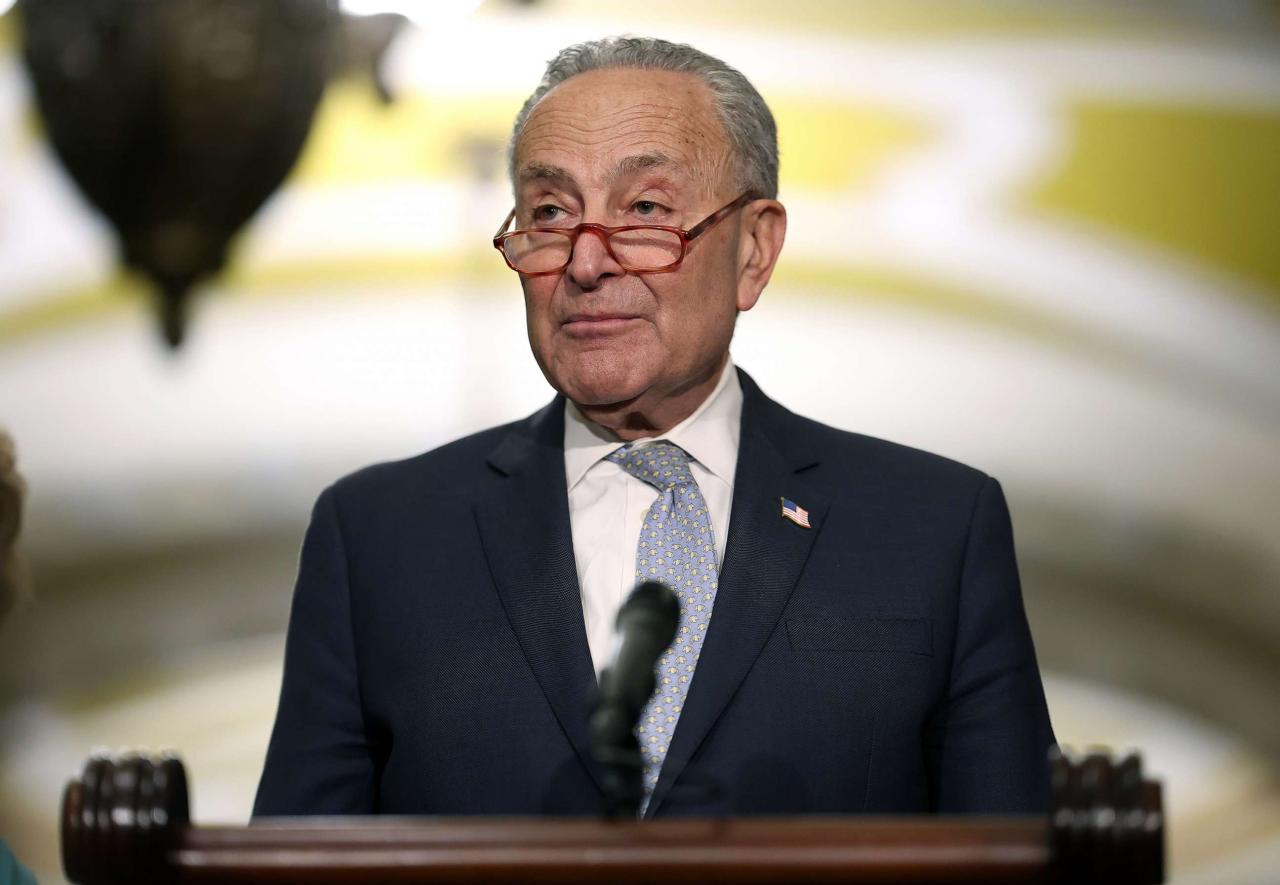US Senate approves government funding extension after failing to reach a consensus on a full budget. This last-minute deal averted a government shutdown, but only temporarily. The extension, while preventing immediate chaos, highlights deep divisions within the Senate regarding spending priorities and ultimately postpones the difficult decisions on long-term fiscal policy. The political maneuvering, compromises, and potential consequences of this short-term fix will be analyzed in detail.
The initial failure to pass government funding stemmed from significant disagreements between the Republican and Democratic parties over spending levels for various government agencies and programs. This disagreement played out over several weeks, marked by failed votes on several proposed bills, each reflecting different approaches to the budget. The eventual extension represents a compromise, though its details and long-term implications remain uncertain.
US Senate Approves Government Funding Extension: US Senate Approves Government Funding Extension After Failing To
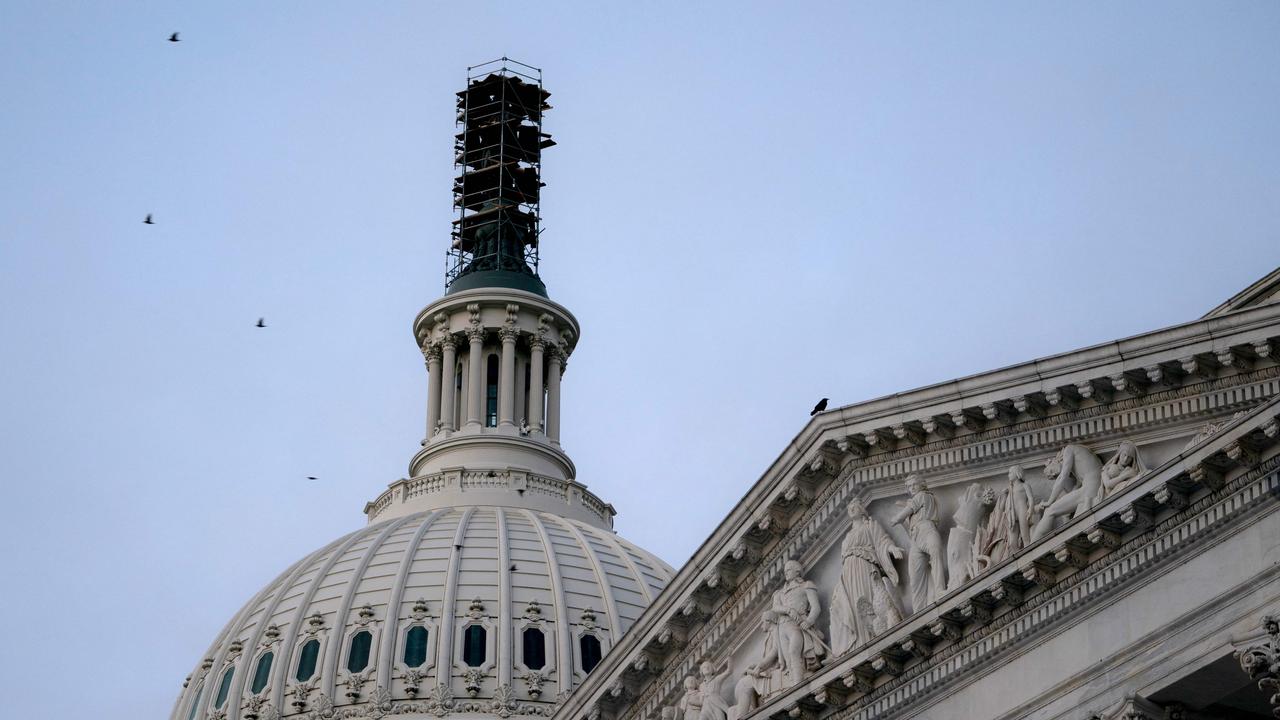
The US Senate’s approval of a government funding extension, following an initial failure to pass a budget, highlights the ongoing challenges of navigating partisan divides in American politics. This temporary solution, while averting a government shutdown, underscores the need for more comprehensive and bipartisan budget negotiations in the near future. The events leading up to the extension, the terms of the agreement itself, and the potential consequences for government operations and future budget cycles are all critical aspects to examine.
The Context of the Funding Extension Failure
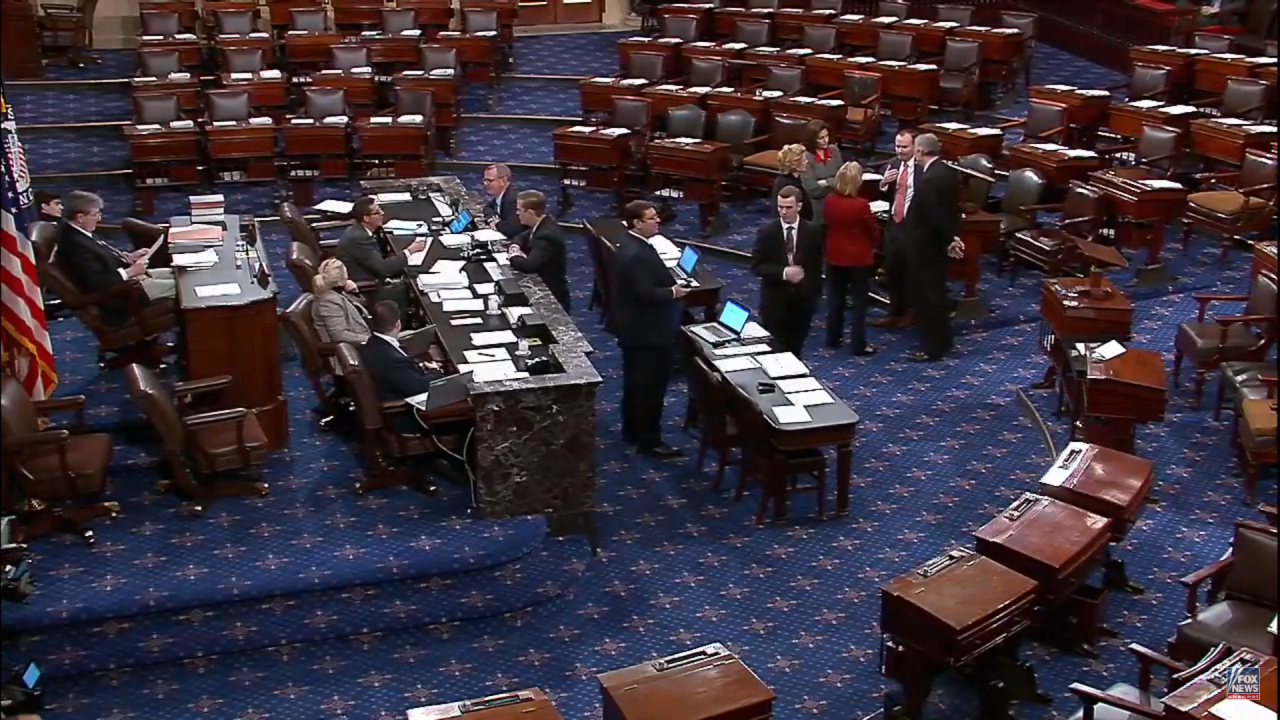
The initial failure to pass government funding stemmed from significant disagreements between the Republican and Democratic parties regarding spending levels and priorities. Republicans, generally advocating for lower spending and fiscal responsibility, clashed with Democrats who pushed for increased investments in social programs and infrastructure. These disagreements played out over several weeks, with multiple legislative proposals failing to garner enough support to overcome the filibuster in the Senate.
A timeline of events leading to the extension might include several failed votes on various appropriations bills, intense negotiations behind closed doors, and increasing pressure from the public and media as the deadline approached. For example, one proposed bill might have focused heavily on defense spending, while another prioritized social programs, leading to an impasse. A third attempt might have attempted to find a middle ground, but still failed to secure the necessary votes.
| Proposal | Defense Spending | Social Programs | Outcome |
|---|---|---|---|
| Proposal A (Republican-led) | High | Low | Failed |
| Proposal B (Democratic-led) | Moderate | High | Failed |
| Proposal C (Bipartisan Attempt) | Moderate | Moderate | Failed |
Analysis of the Approved Extension
The approved extension likely involved compromises on both sides. For example, it might have included a temporary freeze on certain spending levels, while providing short-term funding for critical programs. The duration of the extension, perhaps a few weeks or months, postpones the larger budget battles but necessitates further negotiations in the near future. This short-term solution differs from previous government funding measures which sometimes lasted for a full fiscal year.
It is important to analyze the specific compromises and how they deviate from previous agreements.
- Increased likelihood of another government shutdown before a comprehensive budget is passed.
- Uncertainty for government agencies regarding long-term planning and resource allocation.
- Potential negative impact on investor confidence and economic growth.
- Heightened political polarization and gridlock.
- Erosion of public trust in government institutions.
Impact on Government Operations, US Senate approves government funding extension after failing to
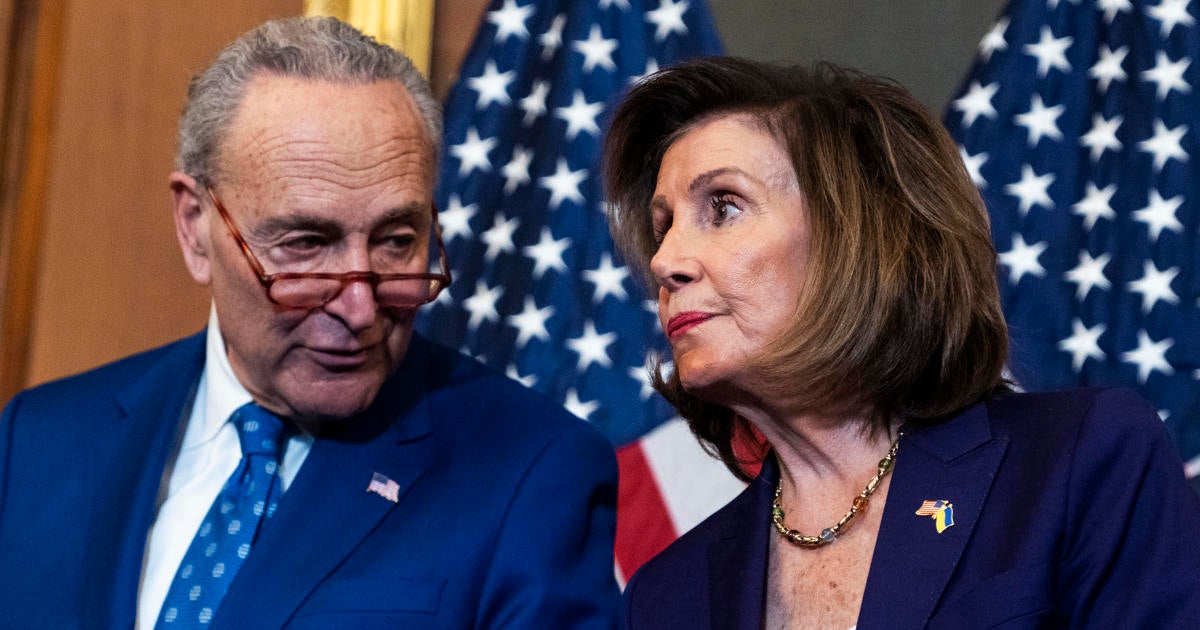
The near-shutdown created immediate uncertainty for various government agencies. Funding delays can lead to temporary furloughs for some employees, disruptions to services, and delays in critical projects. The economic consequences of this uncertainty can include decreased consumer confidence, slower economic growth, and increased market volatility. Specific government programs, depending on their funding source and prioritization, might experience varying levels of impact.
| Sector | Immediate Impact | Potential Long-Term Impact |
|---|---|---|
| Defense | Potential delays in military operations and procurement | Reduced readiness and capability |
| Education | Potential delays in funding for schools and research grants | Reduced educational opportunities and research funding |
| Healthcare | Potential delays in funding for Medicare and Medicaid | Reduced access to healthcare services for vulnerable populations |
Future Implications and Outlook
Upcoming budget negotiations will be challenging, requiring significant bipartisan cooperation. Key players, including the Senate Majority Leader, the House Speaker, and relevant committee chairs, will need to navigate complex political dynamics to reach a consensus. The potential for further government shutdowns remains a significant concern, depending on the progress of these negotiations. Several scenarios are possible, ranging from a swift compromise to prolonged stalemate.
- Implementing a more robust budgeting process with clearer timelines and deadlines.
- Encouraging bipartisan cooperation through increased dialogue and compromise.
- Exploring alternative budgeting mechanisms to reduce reliance on short-term extensions.
- Improving transparency and public engagement in the budget process.
- Strengthening oversight mechanisms to ensure responsible spending.
Public Perception and Reaction
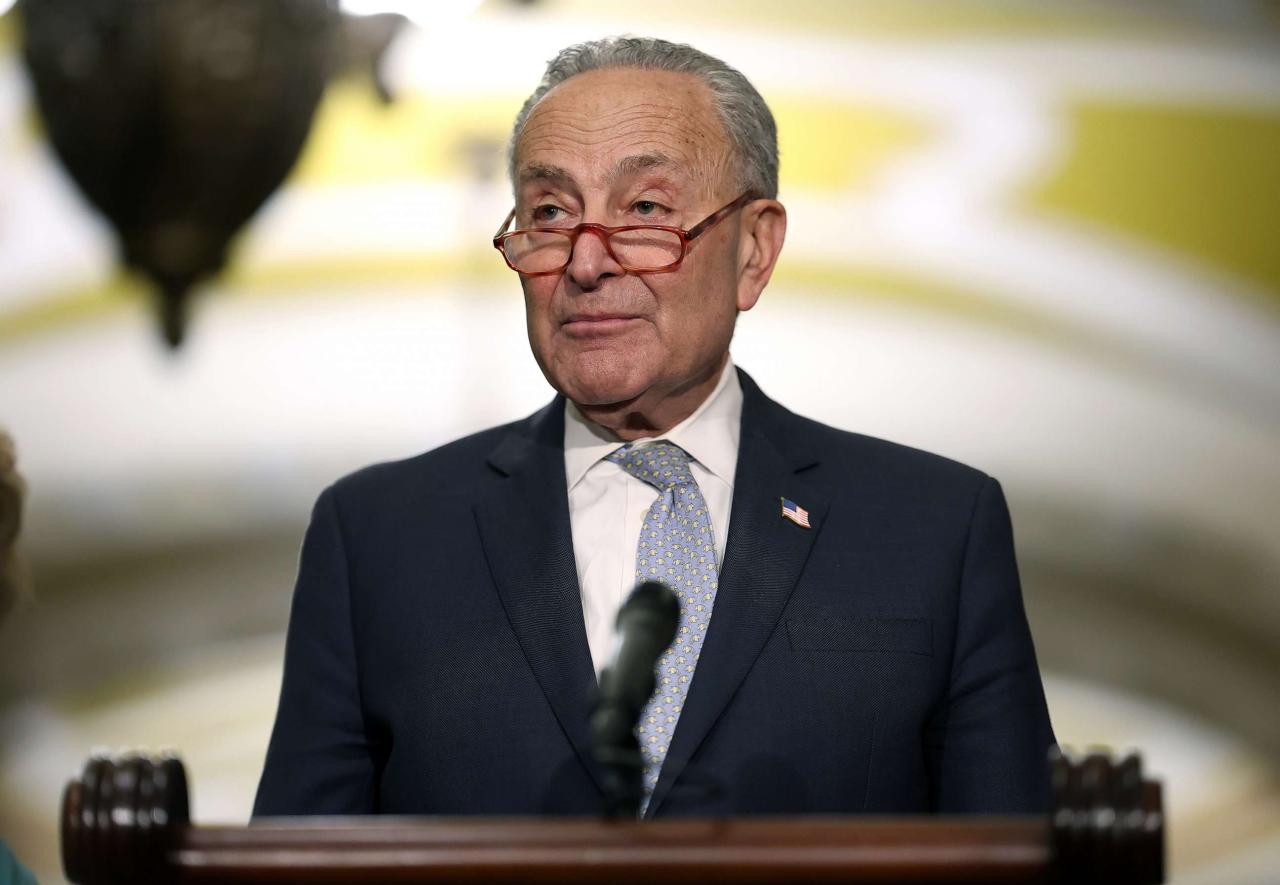
Public reaction to the near-shutdown was likely a mix of concern, frustration, and anger. Media outlets framed the event through their respective political lenses, with some emphasizing the threat of a shutdown, while others highlighted the partisan gridlock responsible. Public opinion polls might show varying levels of support for the different sides, reflecting existing political divisions. Social media likely played a significant role in shaping public discourse, with different groups expressing their opinions and engaging in debates.
A hypothetical visualization of public sentiment might show a bar graph depicting the percentage of respondents expressing approval, disapproval, and neutrality towards the government’s handling of the funding crisis, sourced from a nationally representative poll conducted by a reputable polling organization. The graph would clearly indicate the distribution of opinions, showing the prevailing sentiment.
The US Senate finally approved a short-term government funding extension after earlier attempts failed. This political maneuvering comes as other news breaks, such as the exciting defensive play highlighted in this video: Highlight: Kyle Van Noy, Nnadmi Madubuike Combine for Sack on. The Senate’s action, while avoiding a shutdown, leaves larger budgetary issues unresolved for the near future.
The US Senate’s approval of a government funding extension, following a near-shutdown, offers only a temporary reprieve. While averting immediate crisis, the underlying political divisions remain unresolved. The short-term solution necessitates further negotiations, carrying the risk of future budget standoffs and potential government shutdowns. The ultimate success in resolving the long-term budget issues hinges on the ability of both parties to find common ground and address the core disagreements regarding spending levels and priorities.
The US Senate finally approved a short-term government funding extension after earlier negotiations stalled. This temporary fix allows for continued operations while lawmakers grapple with the budget, a situation somewhat mirroring the unpredictable nature of a Premier League match, like the current West Ham United vs Brighton & Hove Albion LIVE: Premier League game. Ultimately, the Senate’s action avoids a government shutdown, though further legislative battles are undoubtedly on the horizon.
The coming months will be crucial in determining whether this temporary fix leads to a sustainable solution or further political gridlock.
Frequently Asked Questions
What are the potential long-term consequences of this funding extension?
The short-term extension could lead to further budget battles later in the year, potentially causing another government shutdown. It also delays crucial decisions on long-term spending priorities.
How did the public react to the near-shutdown?
Public reaction was mixed, with some expressing frustration at the political gridlock and others focusing on the potential disruption to government services.
What specific government programs were affected by the funding uncertainty?
The impact varied across agencies. Some faced potential delays in funding, while others experienced temporary disruptions in services.
What are the key differences between the proposals that failed to pass?
Failed proposals differed primarily in their overall spending levels and allocations to specific programs. Disagreements centered on defense spending, social programs, and infrastructure investment.
